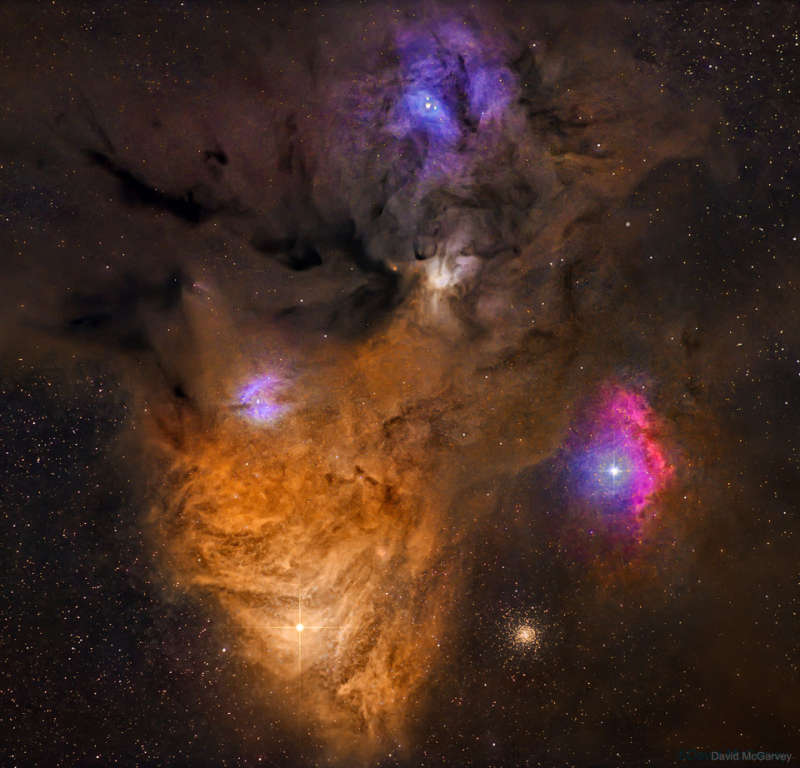Credit & Copyright: David McGarvey
Explanation:
Why is the sky near
Antares and
Rho Ophiuchi so dusty yet colorful?
The colors result from a mixture of objects and processes.
Fine dust illuminated from the front by starlight produces blue
reflection nebulae.
Gaseous clouds whose atoms are excited by
ultraviolet
starlight produce reddish emission nebulae.
Backlit dust clouds block starlight and so
appear dark.
Antares,
a red supergiant and one of the brighter stars in the night sky,
lights up the yellow-red clouds on the lower left of the featured image.
Rho Ophiuchi
lies at the center of the blue nebula near the top.
The distant globular cluster
M4 is visible to the right of Antares.
These star clouds are even more
colorful than humans can see,
emitting light across the electromagnetic spectrum.
1999 2000 2001 2002 2003 2004 2005 2006 2007 2008 2009 2010 2011 2012 2013 2014 2015 2016 2017 2018 2019 2020 2021 2022 2023 2024 2025 |
Yanvar' Fevral' Mart Aprel' Mai Iyun' Iyul' Avgust Sentyabr' Oktyabr' Noyabr' Dekabr' |
NASA Web Site Statements, Warnings, and Disclaimers
NASA Official: Jay Norris. Specific rights apply.
A service of: LHEA at NASA / GSFC
& Michigan Tech. U.
|
Publikacii s klyuchevymi slovami:
Antares - nebula - Tumannosti mezhzvezdnye
Publikacii so slovami: Antares - nebula - Tumannosti mezhzvezdnye | |
Sm. takzhe:
Vse publikacii na tu zhe temu >> | |
